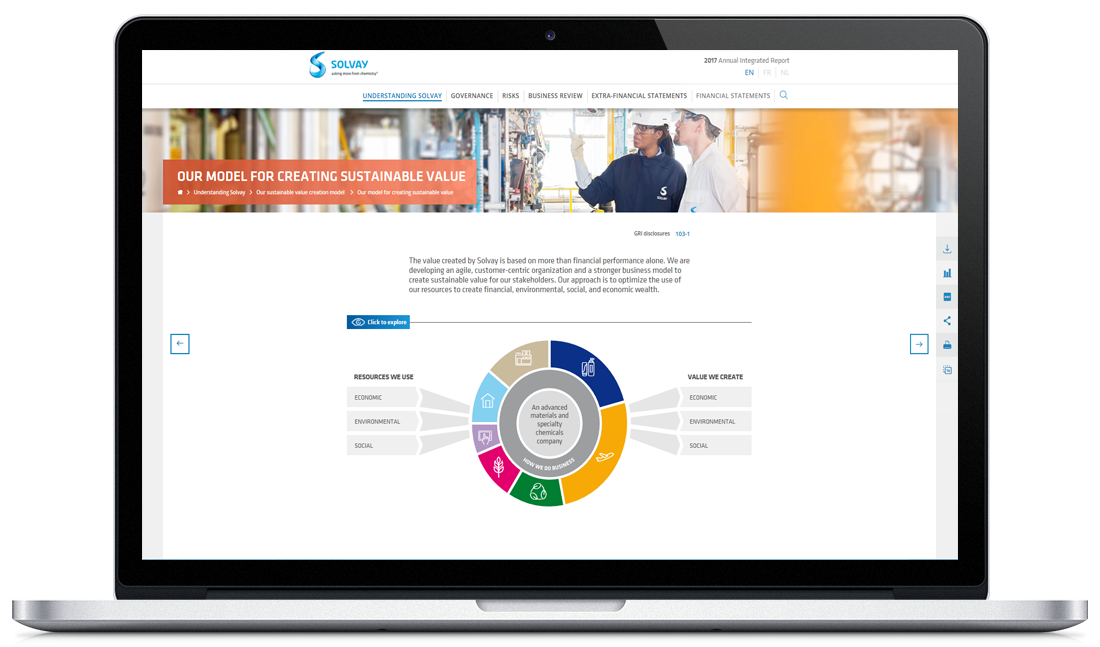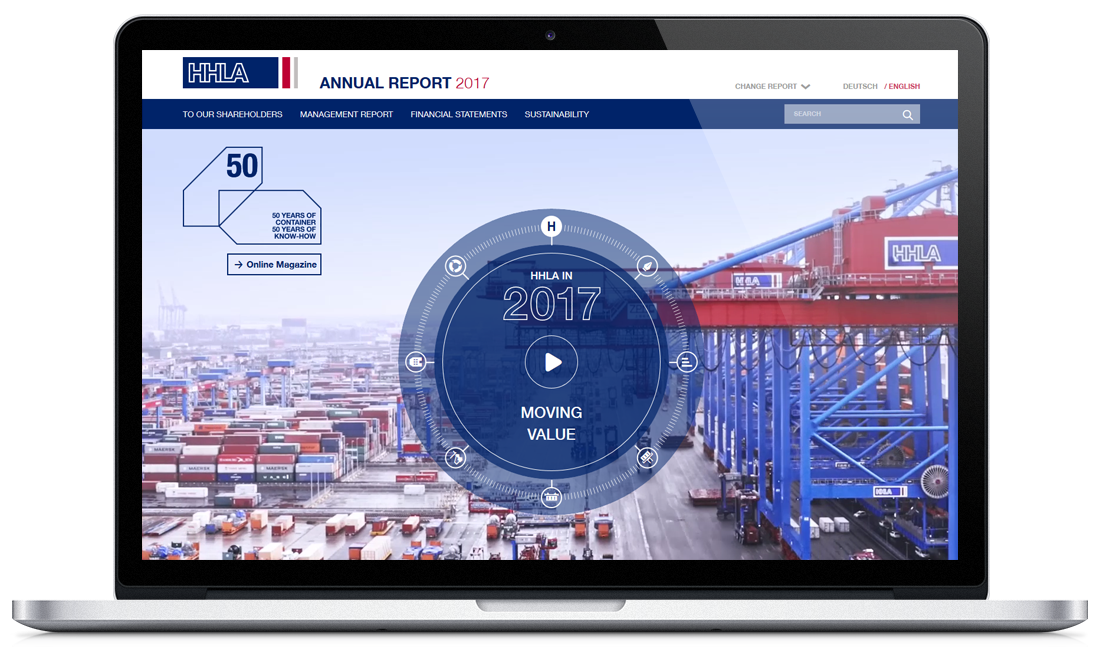The advantages of HTML reports
With integrated reporting the internet is gaining even more importance in its role as a publication channel. A lot of multinational companies like BASF, Bayer, Clariant, Philips or Tieto recently published a digital version of their respective integrated reports. But what are the specific benefits of digital reporting?
Compared to the PDF format, the advantages of online reports can be seen in screen-optimised presentation, connecting content, a high searchability via search engine as well as multimedia and interactive functions. In contrast to PDF, HTML reports can also be designed for the increasingly important use on mobile devices (Responsive Design).
Online Annual Reports also offer another advantage compared to their printed counterparts: they provide data about their usage. Statistics show exactly which pages are most interesting to stakeholders, which chapters receive the most clicks and which language versions are being used.
In terms of integrated reporting they also offer a solution to the increasing complexity around corporate reports: online reports make it possible to present information in as much or as little detail as necessary without the need for large investments in resources. A highly-selective usage and well-structured navigation concepts protect recipients from being overloaded with too much information. Another reason why online reporting is perfectly suited for integrated reporting is cross-linking. While in traditional reporting the individual sections are often disconnected from one another, integrated reporting aims for linking such content, thus revealing interdependencies. Obviously, no other medium is better suited for this task than one that has been based on this idea from the very beginning.
Examples: Value creation
According to the International Integrated Reporting Council (IIRC), integrated reporting in particular should provide insights into the organization’s strategy and how this relates to the organization’s ability to create value. In printed reports, this very complex matter of value creation is often presented in large and complex infographics. Online Reports offer new and interactive ways to transform this information into easily-understandable and interactive infographics.

The Solvay Integrated Report 2017 opts for a presentation approach that focuses on sustainable value creation: the interactive graphic directly interlinks the resources Solvay uses, the business model and the created value. Solvay clusters economic, environmental and social inputs and outputs. The figures in each section can be compared on one screen and combined individually. A click on each figure leads to further information within the report. Furthermore, strategic objectives are marked by a corresponding icon. The graphic also provides information on the company’s markets (within the business model).
You can find other interactive solutions for this in the Online Reports of BASF, Philips or SAP.
Examples: Connecting content
By means of cross-linking, companies can increase the level of transparency of their online reports. In integrated reports links can also show interdependencies between social, ecological and economic reporting factors. There is quite a lot of potential in terms of content connection – BASF or Bayer are just two best-practice examples with more than 1,000 links within their respective online reports.

Other reporting standards such as GRI offer great hyperlinking potential: while the GRI Content Index usually refers to those pages which cover certain GRI indicators, online reports can also reverse this procedure. Within the HHLA Annual Report 2017 a service box on every single page of the report shows which indicators are mentioned in the relevant text. The relevant indicators are automatically extracted from the GRI Content Index without the need to add them manually. A mouse click on the indicator directs the reader straight to the GRI Content Index and provides additional information.
Think digital!
Although integrated online reports have become well-established in many companies, they are often neglected when it comes to conception and design. Good HTML reports consider media-specific requirements of the web as a publication channel. Their content is selectively accessed through the active selection of users, resulting in multiple usability and information-design challenges. Today’s best-practice examples of online reports are often from companies that have been publishing HTML reports for many years and attach importance to it in both their publication and communication strategies.
